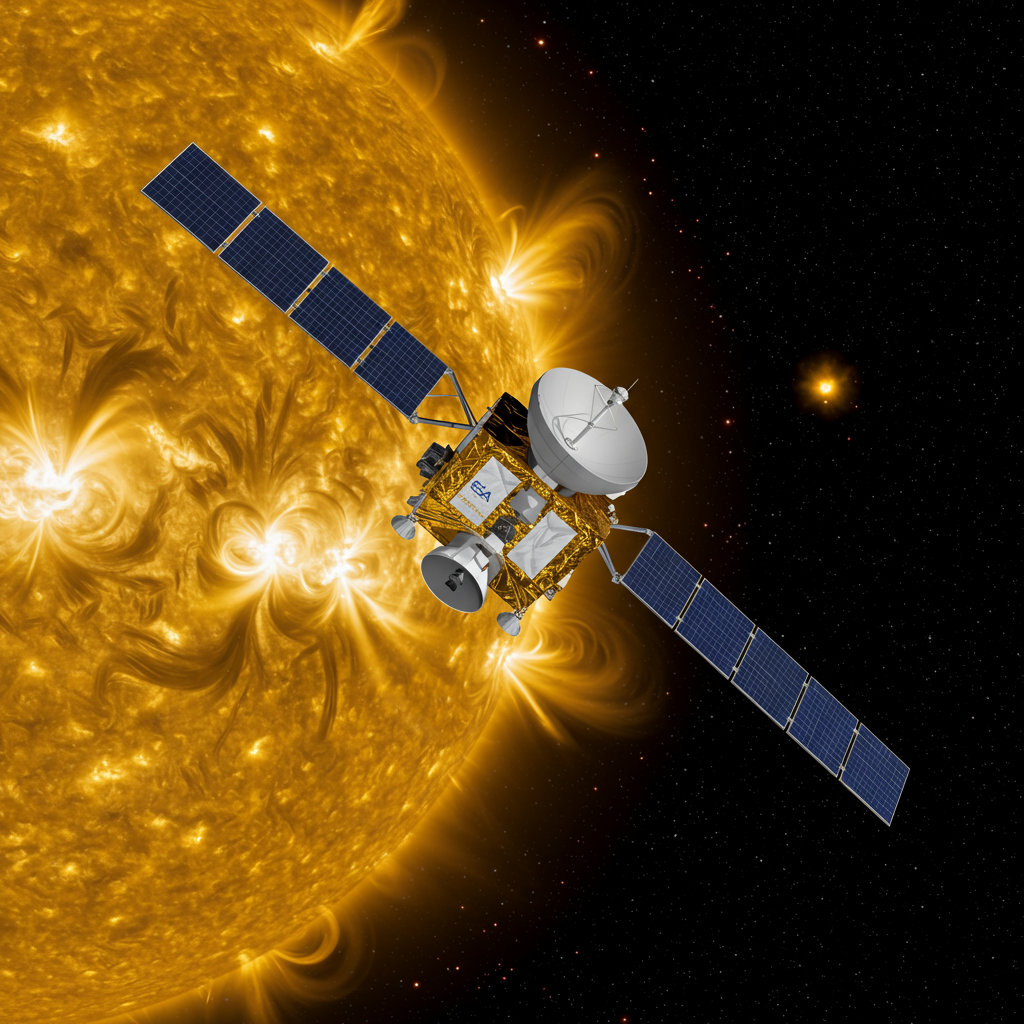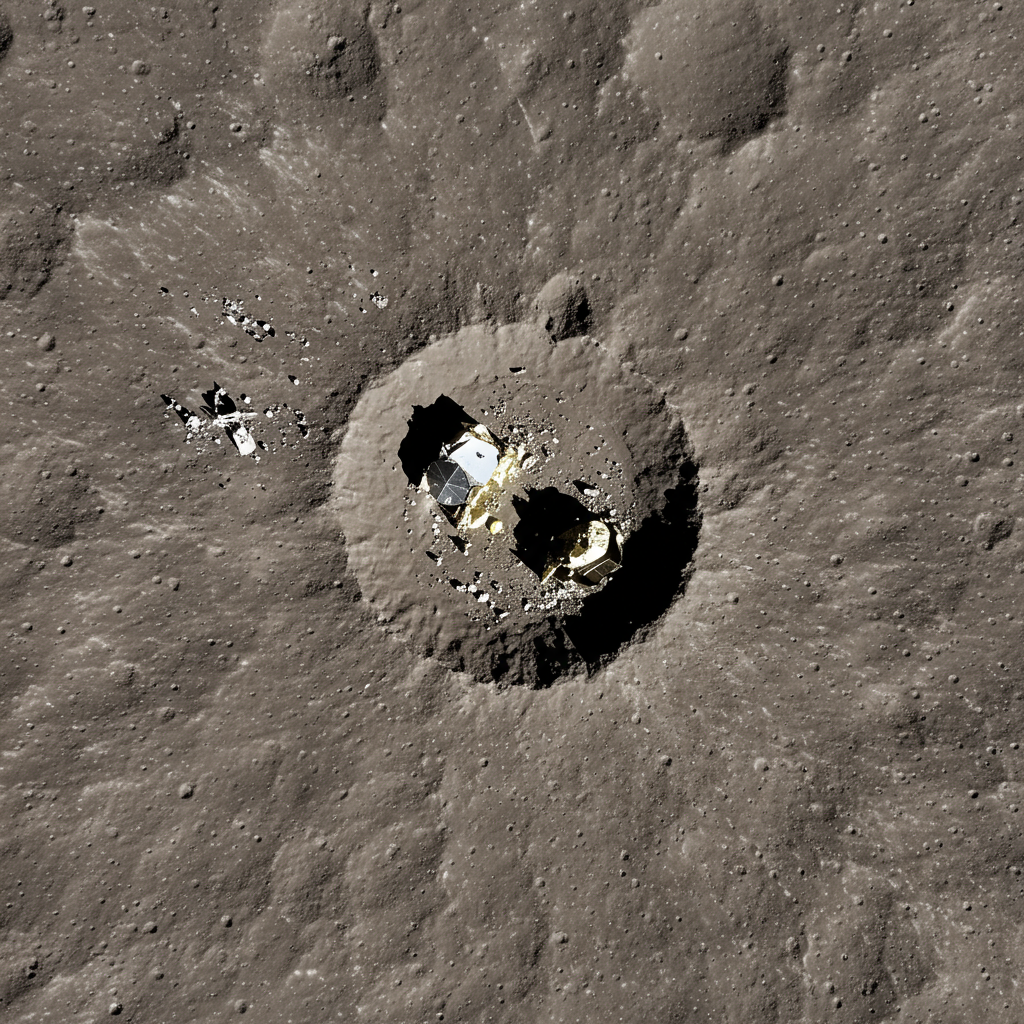Unveiling the Sun’s Poles: A New Era in Solar Science
For the first time in history, humankind is getting unprecedented views of the Sun’s polar regions, thanks to the European Space Agency (ESA)-led Solar Orbiter spacecraft. By tilting its orbit dramatically out of the flat plane where Earth and other planets reside, Solar Orbiter has achieved a unique vantage point, offering a revolutionary perspective on our star. These initial images of the Sun’s south pole, captured in March 2025, mark the beginning of a new era in solar science, crucial for understanding the Sun’s behavior and its impact on space weather.
Historically, observing the Sun’s poles has been challenging. Earth and virtually all other operational spacecraft orbit within the ecliptic plane, a flat disc around the Sun. From this angle, the poles are seen edge-on, making detailed imaging difficult. Solar Orbiter overcomes this limitation through carefully planned maneuvers, using Venus flybys to gradually increase the tilt of its orbit. The spacecraft first reached a viewing angle of 15° below the solar equator on March 16-17, 2025, before reaching 17° by March 23, sufficient to directly image the south pole. Over the coming years, further Venus flybys will increase the tilt even more, promising even better views – up to 24° by December 2026 and 33° by June 2029.
Why Do the Sun’s Poles Matter?
Understanding the Sun’s poles is vital because they hold crucial clues about our star’s dynamic behavior. The Sun’s magnetic field, which drives everything from sunspots to powerful solar flares and coronal mass ejections (CMEs), originates and evolves throughout the roughly 11-year solar cycle. During this cycle, the Sun’s magnetic poles actually flip polarity. Magnetic field lines migrate towards the poles and play a key role in this reversal process and the overall intensity of solar activity. Predicting space weather – solar outbursts that can disrupt satellites, power grids, and communications on Earth – requires a deep understanding of these complex magnetic processes, particularly at the poles, which have been previously unobservable with imaging instruments. Scientists describe the poles as “terra incognita” – unknown territory – highlighting the significance of these first views.
While the ESA/NASA Ulysses mission previously flew over the Sun’s poles, it did not carry cameras. Solar Orbiter is the first to combine high-latitude viewing with imaging capabilities and a suite of in-situ sensors, allowing scientists to visually monitor changes at the poles throughout the solar cycle and collect data closer to the Sun than Ulysses.
First Views: Instruments and Initial Findings
The groundbreaking initial images of the south pole were captured by three of Solar Orbiter’s ten scientific instruments:
Polarimetric and Helioseismic Imager (PHI): Images the Sun in visible light and, crucially, maps the Sun’s surface magnetic field.
Extreme Ultraviolet Imager (EUI): Images the Sun in ultraviolet light, revealing the extremely hot charged gas (plasma) in the Sun’s outer atmosphere, the corona.
- Spectral Imaging of the Coronal Environment (SPICE): Analyzes light from specific elements at known temperatures, providing views of different layers within the Sun’s atmosphere.
- <a href="https://www.esa.int/ScienceExploration/SpaceScience/SolarOrbiter/SolarOrbitergetsworld-firstviewsoftheSunspoles”>www.esa.int
- www.scientificamerican.com
- www.nbcnews.com
- www.livescience.com
- www.bbc.com
By combining data from these instruments, scientists can study how material moves in the Sun’s outer layers and gain insights into previously unseen phenomena like potential polar vortices, similar to those observed on other planets.
One of the most significant early findings from PHI’s magnetic field measurements is the discovery that, during the current solar maximum phase, the Sun’s magnetic field at the south pole is surprisingly “messy” or a “jumble.” Unlike a simple bar magnet, the south pole shows a mixture of both north and south polarity magnetic fields scattered across the region. This complex, mixed state is temporary and is expected during the transition phase of the solar maximum as the Sun’s magnetic field prepares to flip. As the Sun moves towards its quieter solar minimum phase in about 5-6 years, a single polarity should gradually build up and dominate each pole. Solar Orbiter’s arrival at high latitudes at this critical time allows scientists to witness this entire process unfolding, providing a crucial “missing piece of the puzzle” for solar activity models.
Another key achievement comes from the SPICE instrument, which for the first time has used precise spectral line tracking to perform Doppler measurements. This technique measures the speed and direction of moving solar material, similar to how the pitch of an ambulance siren changes as it passes. SPICE has created velocity maps showing the movement of particles, such as carbon ions in the Sun’s transition region. These Doppler measurements, taken from Solar Orbiter’s high-latitude perspective, are considered revolutionary for understanding how particles are ejected from the Sun to form the solar wind – a key goal of the mission. Previous missions viewing from the ecliptic plane had only grazing views, hindering such measurements.
Looking Ahead: The Best Views Are Yet to Come
These initial datasets from Solar Orbiter’s inclined orbit are just the beginning. The complete dataset from this first “pole-to-pole” flight is expected back on Earth by October 2025. As Solar Orbiter continues to tilt its orbit further in the coming years, it will provide increasingly detailed views of the polar regions. Data from all ten of its advanced instruments will pour in, promising to fundamentally transform our understanding of the Sun’s magnetic field, the solar wind, and overall solar activity. This enhanced understanding is essential for developing sophisticated computer models capable of accurate space weather prediction – a “Holy Grail” of solar physics that benefits technology and exploration on Earth and beyond.




